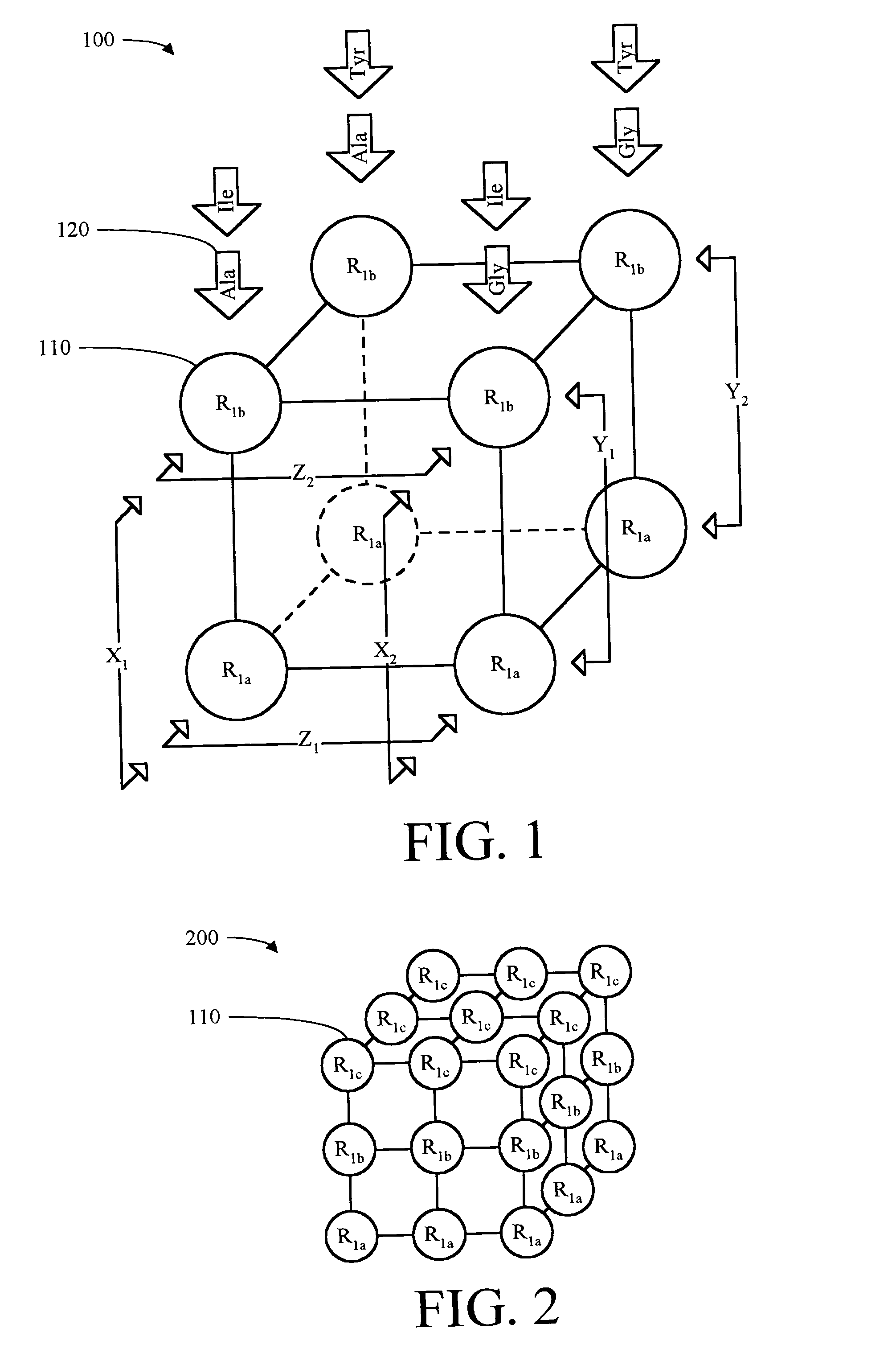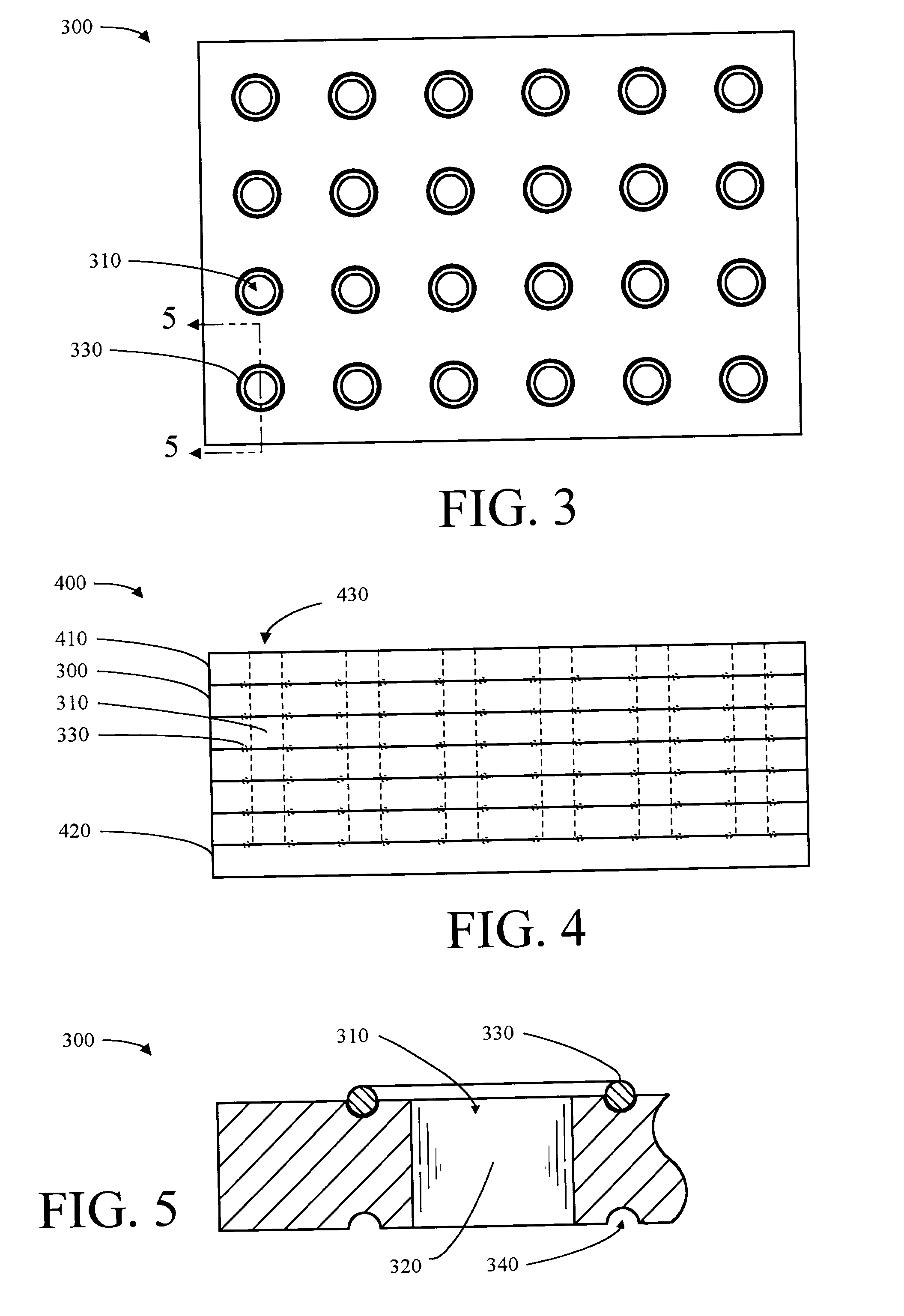Three-dimensional array of supports for solid-phase parallel synthesis and method of use
- Summary
- Abstract
- Description
- Claims
- Application Information
AI Technical Summary
Benefits of technology
Problems solved by technology
Method used
Image
Examples
example 2
Aminomethylation (Functionalization) of Polystyrene-Grafted PP Balls
[0117] One hundred 4.7 mm diameter polystyrene-grafted PP balls were placed in a 50 ml solid phase peptide synthesis (SPPS) vessel on a reciprocation shaker and washed with 30 ml of TFA / DCM (1:1 v / v) for 4.times.5 min (4 times for 5 minutes each). A solution of (2.1 millimoles (mmol)) N-(hydroxymethyl)phthalimide (97% purity available from Acros Organics USA in Pittsburgh, Pa.) in 50 ml of TFA / DCM (1:1 v / v) was added to the pre-washed balls and the mixture was shaken for 20 min. Next, 10 ml of TFMSA / TFA / DCM (10:45:45 v / v / v) was added drop wise over a period of 4-5 hours and shaking was continued for another 4 hours after the addition. The balls were separated from the mixture by filtration and washed sequentially with the following: TFA / DCM (1:1 v / v) (100 ml), DCM (250 ml), methanol (150 ml), and ethanol (150 ml). The balls were then shaken in 50 ml ethanol containing 10% hydrazine (Aldrich) for 12 hours at 70.degre...
example 3
Attachment of Fmoc-Rink Linker to Aminomethyl Polystyrene-Grafted Polypropylene Ball Support
[0118] One hundred polystyrene-grafted PP balls functionalized to the aminomethyl functionality (substitution--2.0 .mu.mol / ball) as described in Example 2, were pre-washed with 150 ml DMF. The balls were placed into a SPPS reaction vessel containing DMF. Fmoc-Rink linker (p-[(R,S)-.alpha.-[1-(9H-Fluoren-9yl)-methoxyformamido]-2,4-dimethoxybenz-yl]-phenoxyacetic acid) (0.6 mmol or 3 equivalents (equiv.)) and HOBt (0.6 mmol or 3 equiv.) were dissolved in DMF and charged into the SPPS reaction vessel. DIC (0.6 mmol or 3 equiv.) was dissolved in 1 ml of DMF and added. The mixture was shaken on a reciprocating shaker at 25.degree. C. for 15 hours. The mixture was filtered and washed with DMF 5.times.100 ml (5 times with 100 ml each time). The result was that the Fmoc-Rink linker carboxylic acid functionality formed an amide type covalent bond to the amine functionality of the functionalized polyst...
example 4
Attachment of the First Diversity R.sub.1 Group Building Block to the Rink Linker Substituted Ball Support
[0119] Using eight Fmoc-Rink linker substituted ball supports from Example 3, the Fmoc protection group was removed by reacting 50 ml of Piperidine / DMF (1:1 v / v) with the ball supports for 10 minutes. Thus, an amine functionality from the Rink linker was liberated to act as the anchoring point for coupling the first diversity R.sub.1 group building block to the linker substituted ball support by means of a covalent bond. The ball supports were then washed with DMF 6.times.50 ml, and split into two sets of four supports each, a first set to receive the R.sub.1a initial building block and a second set to receive the R.sub.1b initial building block. Alanine was selected as the R.sub.1a initial building block, accordingly Fmoc-Ala-OH (24 .mu.mol, 3 equiv.), HOBt (24 .mu.mol, 3 equiv.), and DIC (24 .mu.mol, 3 equiv.), were dissolved in 10 ml DMF and charged into a glass reaction vess...
PUM
 Login to View More
Login to View More Abstract
Description
Claims
Application Information
 Login to View More
Login to View More - R&D
- Intellectual Property
- Life Sciences
- Materials
- Tech Scout
- Unparalleled Data Quality
- Higher Quality Content
- 60% Fewer Hallucinations
Browse by: Latest US Patents, China's latest patents, Technical Efficacy Thesaurus, Application Domain, Technology Topic, Popular Technical Reports.
© 2025 PatSnap. All rights reserved.Legal|Privacy policy|Modern Slavery Act Transparency Statement|Sitemap|About US| Contact US: help@patsnap.com



